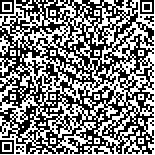| 本文已被:浏览 620次 下载 356次 |

码上扫一扫! |
|
|
| 气滞血瘀型腰椎间盘突出症患者MRI表现与疼痛程度、腰椎功能、中医症状积分的相关性分析 |
|
李齐1,2, 符碧峰2, 张熙南2, 张成龙1,2, 张君涛2, 王平2
|
|
1.天津中医药大学, 天津 301617;2.天津中医药大学第一附属医院骨伤科, 国家中医针灸临床医学研究中心, 天津 300193
|
|
| 摘要: |
| [目的] 分析气滞血瘀型腰椎间盘突出症(LDH)患者磁共振成像(MRI)表现与疼痛程度、腰椎功能、中医症状表现的相关性,为评估患者病情提供客观化依据。[方法] 回顾性研究249例LDH患者,采集患者MRI资料及视觉模拟评分法(VAS)评分、日本骨科协会评估治疗分数(JOA)评分、中医症状积分资料,应用统计学方法分析其相关性。[结果] 1)突出物大小与患者疼痛程度无相关性(P>0.05),与腰椎功能呈负相关(P<0.05,r=-0.294),与中医症状积分呈正相关(P<0.05,r=0.279)。2)伴随指征与患者疼痛程度呈正相关(P<0.05,r=0.131),与腰椎功能呈负相关(P<0.05,r=-0.225),与中医症状积分呈正相关(P<0.05,r=0.268)。3)MRI综合表现与患者疼痛程度呈正相关(P<0.05,r=0.129),与腰椎功能呈负相关(P<0.05,r=-0.331),与中医症状积分呈正相关(P<0.05,r=0.320)。[结论] 气滞血瘀型LDH患者MRI表现与疼痛程度、腰椎功能、中医症状表现有一定的相关性,临床医生可对患者MRI表现进行定量分析,进而更准确的把握患者病情。 |
| 关键词: 腰椎间盘突出症 磁共振成像 相关性 |
| DOI:10.11656/j.issn.1672-1519.2022.02.08 |
| 分类号:R681 |
| 基金项目:天津市天津中医药大学第一附属医院自拟课题项目(ZN0020)。 |
|
| Correlation analysis of MRI manifestations with pain degree,lumbar function and traditional Chinese medicine syndrome score in patients with lumbar disc herniation of qi stagnation and blood stasis |
|
LI Qi1,2, FU Bifeng2, ZHANG Xinan2, ZHANG Chenglong1,2, ZHANG Juntao2, WANG Ping2
|
|
1.Tianjin University of Traditional Chinese Medicine, Tianjin 301617, China;2.Department of Orthopedics, First Teaching Hospital of Tianjin University of Traditional Chinese Medicine, National Clinical Research Center of Acupuncture and Moxibustion, Tianjin 300193, China
|
| Abstract: |
| [Objective] To analyze the correlation between MRI manifestations and pain degree, lumbar function and traditional Chinese medicine (TCM) syndrome manifestations in patients with lumbar disc herniation(LDH) type of qi stagnation and blood stasis, and to provide objectification basis for the evaluation of patients' condition.[Methods] A retrospective study was performed on 249 patients with LDH. MRI imaging data, VAS score, JOA score and TCM syndrome score were collected, and their correlation was analyzed by statistical method.[Results] 1) Protrusion size had no correlation with pain (P>0.05), was negatively correlated with lumbar spine function (P<0.05, r=-0.294), and was positively correlated with TCM syndrome score (P<0.05, r=0.279). 2) The concomitant indication was positively correlated with the pain degree of patients (P<0.05, r=0.131), negatively correlated with lumbar spine function (P<0.05, r=-0.225), and positively correlated with TCM syndrome score (P<0.05, r=0.268). 3) The comprehensive MRI findings were positively correlated with the pain degree of patients(P<0.05, r=0.129), negatively correlated with lumbar spine function (P<0.05, r=-0.331), and positively correlated with TCM syndrome score (P<0.05, r=0.320).[Conclusion] MRI manifestations of LDH patients with qi stagnation and blood stasis are correlated with pain degree, lumbar function and TCM syndrome manifestations to a certain extent. Clinicians can conduct quantitative analysis of MRI manifestations of patients, and then more accurately grasp the condition of patients. |
| Key words: lumbar disc herniation MRI correlation |
